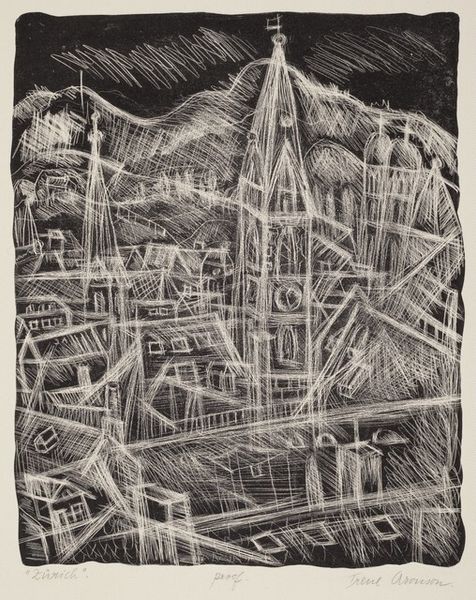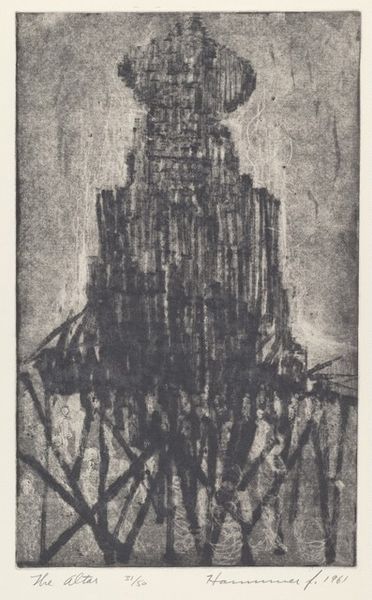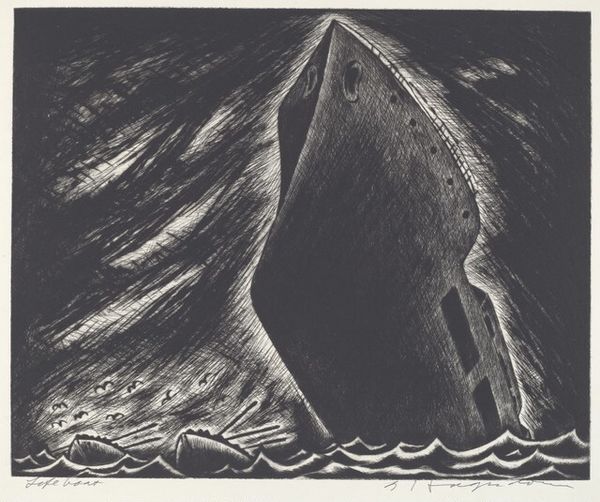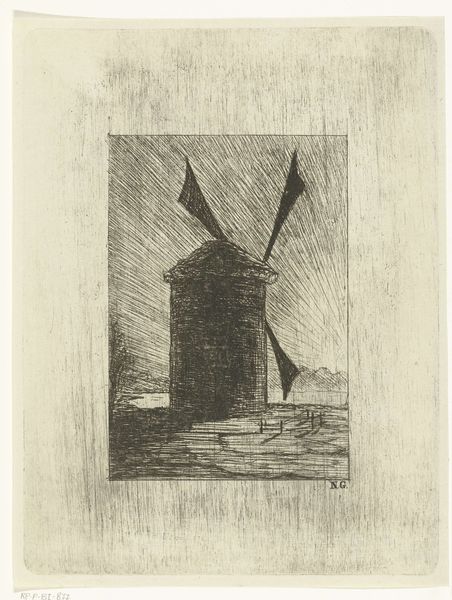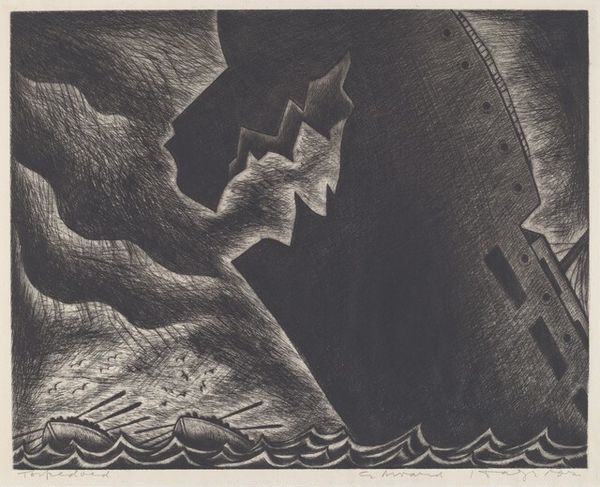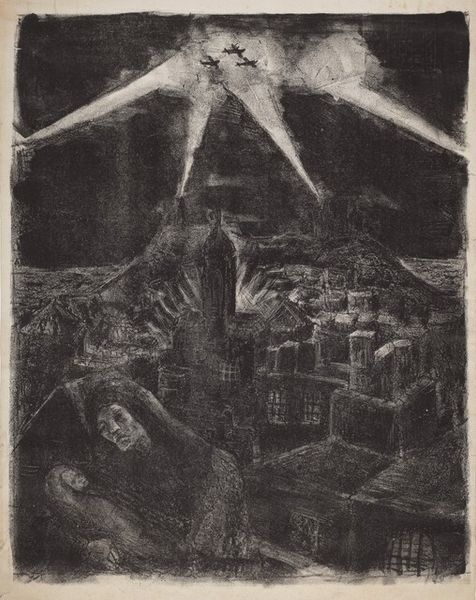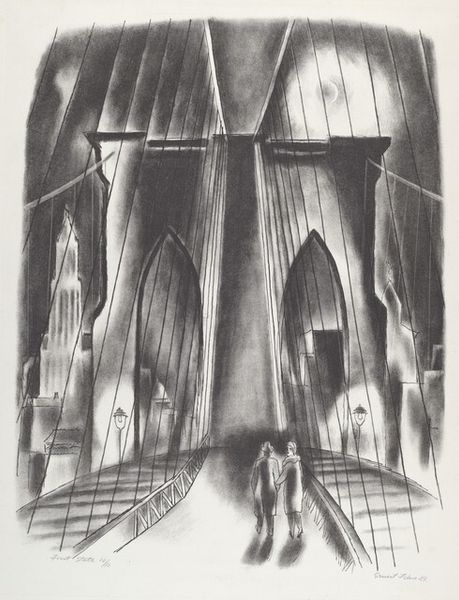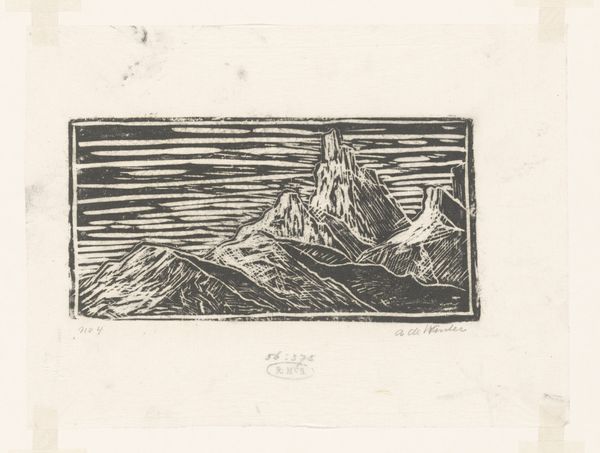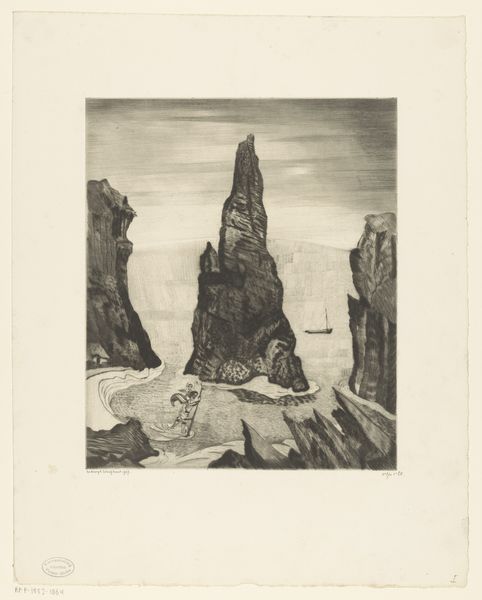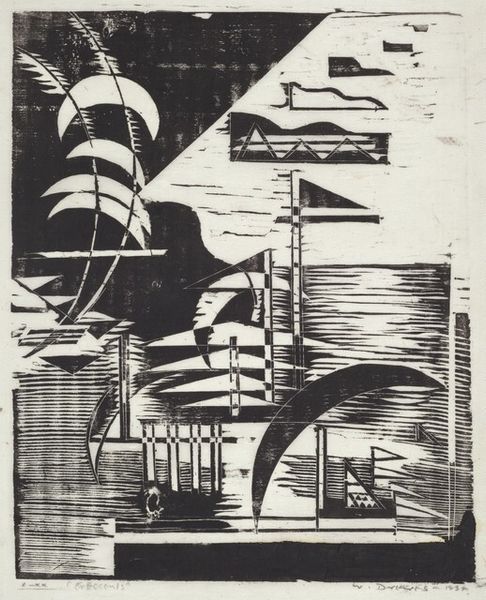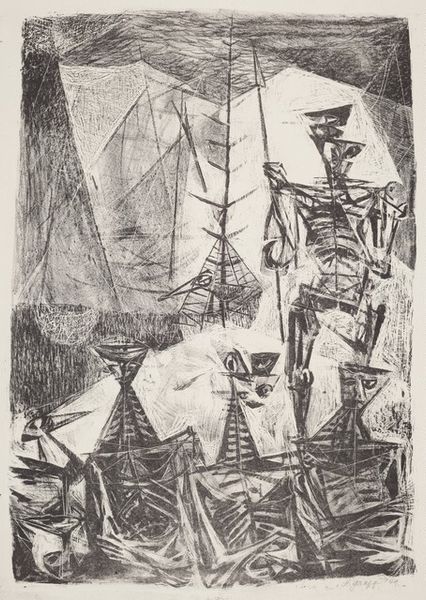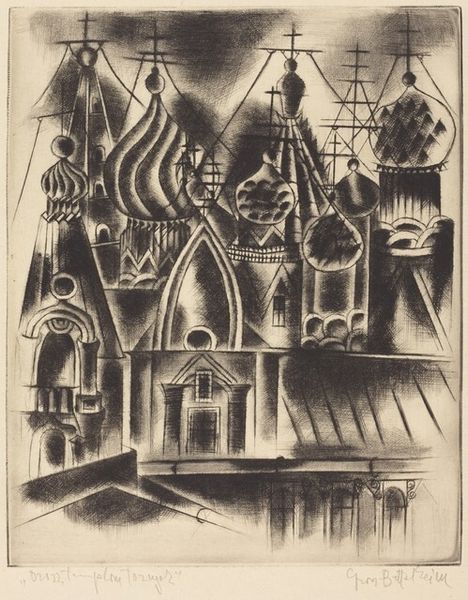
print, etching, architecture
# print
#
etching
#
landscape
#
geometric
#
modernism
#
architecture
Dimensions: plate: 32.5 x 29.2 cm (12 13/16 x 11 1/2 in.) sheet: 49.7 x 44 cm (19 9/16 x 17 5/16 in.)
Copyright: National Gallery of Art: CC0 1.0
Editor: This is Krzysztof Skórczewski’s “Cathedral,” an etching from 1993. The architectural structure is intriguing and unsettling. It appears unfinished, perhaps even collapsing in on itself. What's your take on this work? Curator: It strikes me as a powerful commentary on the promises and failures of utopian architecture, and the institutional powers they represent. We often view cathedrals as symbols of faith and enduring strength. But here, Skórczewski presents it as a skeletal structure, consumed by decay, or perpetual construction. Editor: Consumed by decay is a good way to put it. Do you think the 'unfinished' quality is deliberate? Curator: Absolutely. Consider the socio-political climate in the early 1990s, particularly in Eastern Europe. The collapse of Soviet power left a void, a questioning of previously held beliefs and institutions. Is Skórczewski suggesting that the 'cathedrals' of ideology are forever under construction, never truly complete, and perhaps inherently unstable? Notice the almost feverish level of detail in the etching, hinting at the tireless efforts put into this ideological "cathedral." Editor: I hadn’t thought about the political context of the time. So, the fragility of the structure is more than just aesthetic; it’s a symbol? Curator: Exactly. The artwork challenges the monumentality of religious and political institutions. The medium, etching, itself, lends to this fragility – the fine lines suggesting impermanence. What did you make of the blank void at the top? Editor: It seemed odd to me. Maybe representing uncertainty or something not fully realized? Curator: Perhaps a suggestion that those promised "heavens" remain perpetually out of reach? Editor: This has really shifted my perspective. I saw an interesting, albeit incomplete, architectural drawing but you are seeing societal symbolism! Curator: Art always operates within a specific context, and by examining that context, we gain a much deeper appreciation of the artist’s intent. Hopefully we can explore some of this contextual richness on other works too!
Comments
No comments
Be the first to comment and join the conversation on the ultimate creative platform.
